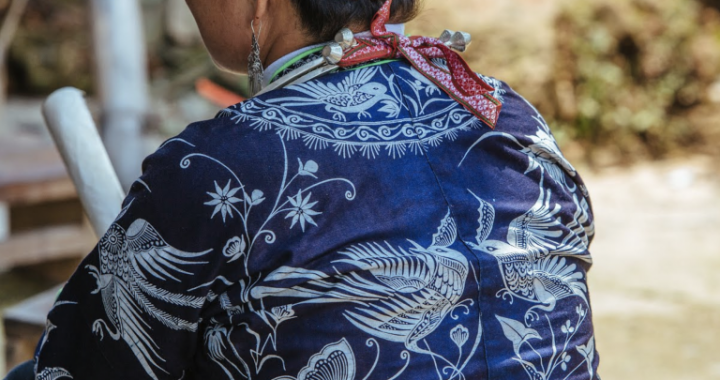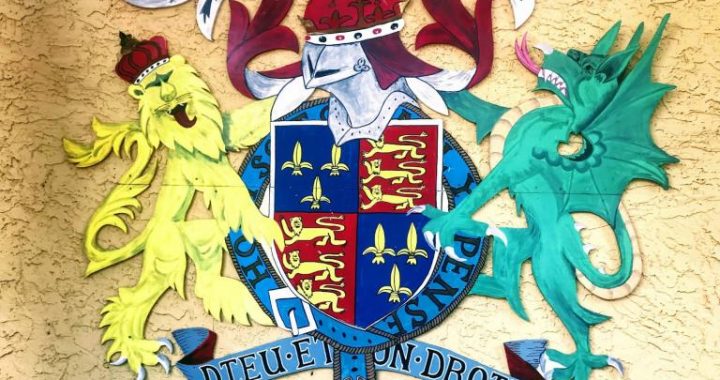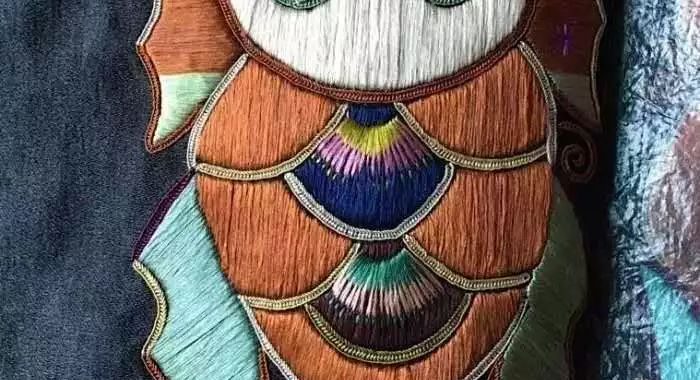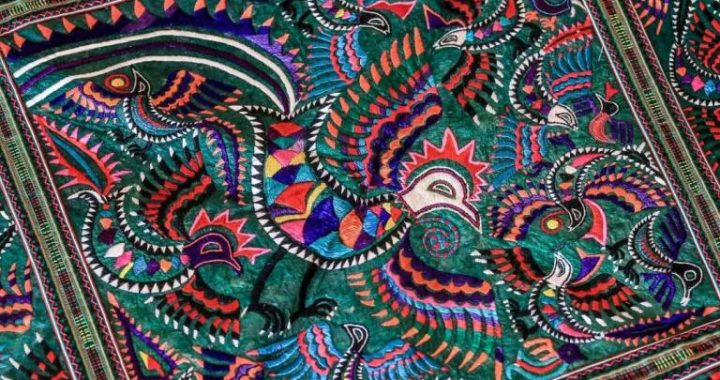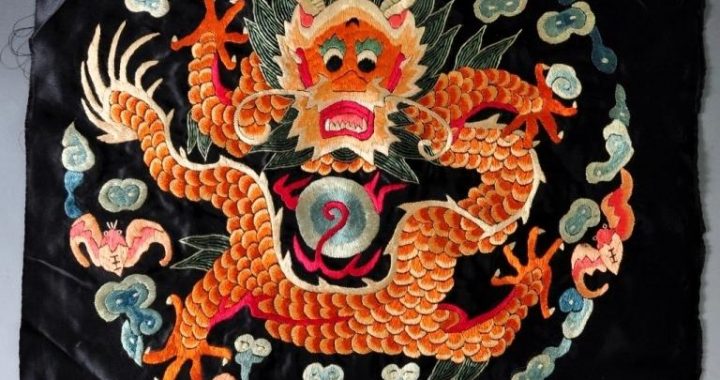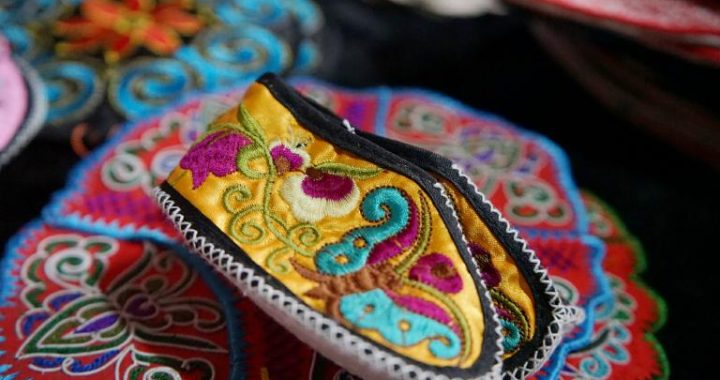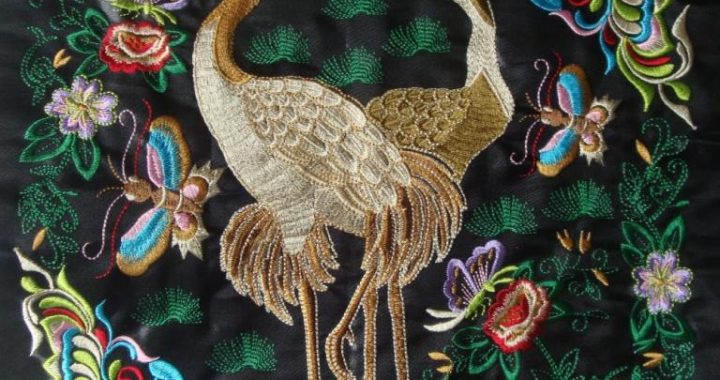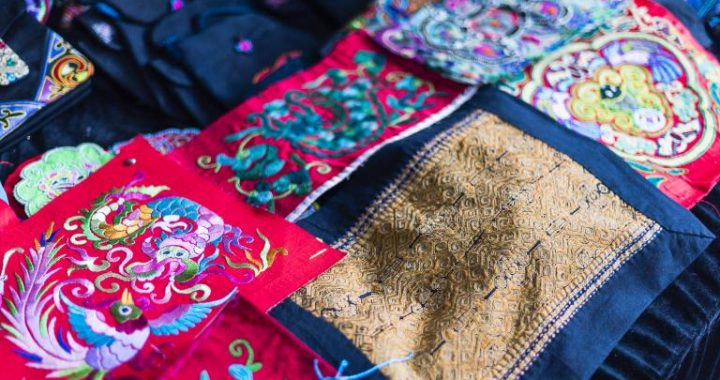Graceful Floral Roundels
2 min readThe Tang dynasty witnessed the diversification of motifs and styles of silk patterns. Beside the pattern of Duke Lingyang mentioned above, the pattern of floral roundel was another brilliant example. The floral patterns applied in roundels did not refer to any particular flowers existed in reality, but transformed and mixeddifferent plants and flowers together, and it underwent evolvement from simple to colorful, and from imaginative to more realistic.
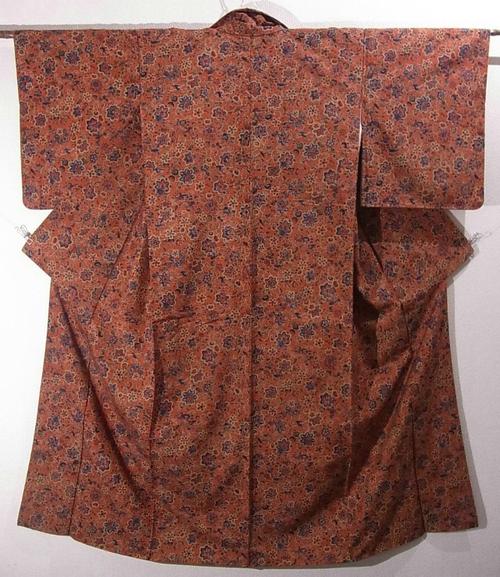
1) Roundel of Persimmon Calyx
The roundel of persimmon calyx is the simplest floral pattern in discussion, which consists of four plain petals, as reflected in a piece of twill damask excavated in Dulan. The great poet Bai Juyi (772-846) also wrote about such twill damask when he mentioned specialties of Hangzhou.
2) Bud-style Roundel
As time went by, the four petals gradually became more intricate, and evolved into the most popular floral roundel pattern of the Tang dynasty, called the bud-style roundel, as they were no longer simple petals, but brought together with leaves and buds. Such patterns appeared more gorgeous and glorious, best represented by the samite of floral patterns now collected in the Metropolitan Museum of Art in New York City of the United States, with each weft-warp repeat as long as 61 centimeters.
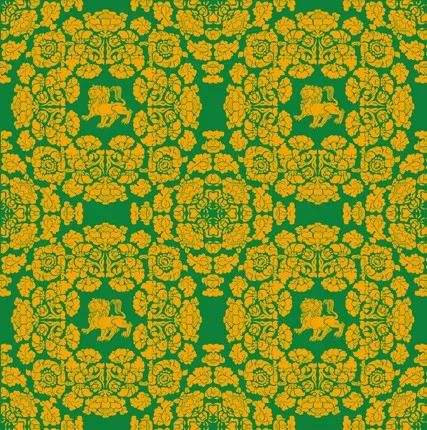
3) Side Floral Roundel
“From heaven to earth”might be the most proper comment on the evolution of floral roundels since mid-Tang dynasty, when flowers weaved inside the roundels became more realistic. This kind of floral roundel is named side floral roundel, the best example being the samite with great floral roundel on blue ground housed in the Shosoin, Nara. Through appraisal of Japanese experts, this cultural object is considered to have been made in ancient China.
